5 Strategies for Addition you MUSt teach
When I was growing up in the 80s, there was one 3-digit addition regrouping strategy and that was the standard algorithm. Manipulatives? What are manipulatives? Paper and pencil or BUST! Did you know that the “standard algorithm for addition” is known as the “American Way” in the rest of the world?
It turns out that there are MANY strategies for addition that can improve addition mental strategies, make kids think about the size of the entire number, improve flexible thinking and may even make
you better at 3-digit addition problems!
Strategies for Addition #1: The Standard Algorithm
Ahh, yes. Ol’ Betsy. She really has stood the test of time. Depending on your math mindset, she either strikes fear in your heart or induces fond memories. If you grew up in the 80’s or before, this may have been the only way that you were taught to add. There are a few problems with the standard algorithm, but the biggest issues is that we don’t focus on the true value of the numbers. Let me show you with this addition strategies anchor chart.

Pros and Cons
One of the pros is that you can easily help your student with this method, but, when budding mathematicians get to step 2, they say “three plus four”. It is actually “3 TENS plus 4 TENS” or “30+40”. The same goes for the hundreds column. I put a note on the side of my anchor charts reminding students the true value of the numbers.
On top of that, this is one of the ways to teach addition with regrouping required. As a kid, I could “carry the 1”, but it was just another step in solving the problem. I didn’t understand WHY I was doing it. Today we say “carry the TEN”, but it still has the same issue. This way of doing 3 digit addition with regrouping can also be difficult if students don’t properly line up the numbers at the start and it is not a great mental math addition strategy.
Because of all of this, this is one of the addition strategies for 4th grade mastery
Strategies for Addition #2: Vertical Addition
This is one of the strategies for addition that looks very similar to the standard algorithm. The BIG difference with this strategy is that students record the ENTIRE number when they add each place value. Take a look at this 3 digit addition strategies poster:

Pros and Cons
Look at step #1. 4+9 is 13, but instead of writing the 3 and “carrying” the one, students will write the entire number under the line. For the tens column, students need to think “30+10”, not just “3+1”. This method of how to teach addition emphasizes the size of each place value.
The cons of this method is that it relies on lining up the place values properly both when they write the problem and when they record the answer. In my opinion, vertical addition is also not one of the great addition teaching strategies for mental math. It still requires regrouping when you add the bottom two together. I know my brain finds that a tad more difficult to do.
Strategies for Addition #3: The Visual Model
The visual model is the first strategy taught to children for 2 and 3 digit addition. They start with physical ones, tens and hundreds blocks and a place value chart. Students are able to see how 10 ones are the same length as 1 ten stick and are able to actually “trade” across columns when it’s time to regroup.
One of the addition strategies for 2nd grade is to move from the physical pieces to the visual representation of the pieces. It is important to always have the physical manipulatives available for use across grade levels, especially for students still needing a concrete representation of 3 digit addition with regrouping.

Pros and Cons
On this chart, I could have (and probably should have) added a thousands column. The students would then circle 10 of the hundred blocks and move them to the thousands. In this case, though, the answer will not change with the addition of a thousands column.
This strategy is great for beginning mathematicians and students who need to go “back to basics”. It is not recommended as a mental math strategy and also takes more time than other 3 digit addition strategies.
Strategies for Addition #4: The arrow way
I have saved my favorites for last! These last two strategies changed my life and my attitude about math. The arrow way of solving 3 digit addition is one of the amazing addition mental math strategies! It naturally enables the learner to think of the number in its entirety and to play around with the numbers to find the answer. You can now teach addition with regrouping WITHOUT regrouping! Look!

Pros and Cons
The beauty of this beauty is that you can break apart the numbers in any way you like. I find it easier to take a little to get to the nearest friendly number first, but other people prefer to add the hundreds, then the tens, then ones…and that’s OK! This strategy is truly differentiated, but it can take a bit of study to understand.
First, start with the larger number and draw a little arrow next to it. You are now going to break down the second addend to easily add it to the first. I broke apart 519 into 6+500+10+3. I chose to add 6 first in order to get 734 to 740. Then, I found it easy to add the hundreds, then the tens and finally the rest of the ones. The arrow way is a great mental math strategy and one that is often used in Number Talks by students. I honestly can’t think of any cons!
Strategies for Addition #5 : The Open Number line Way
This is the last way I’m going to highlight today, although these are not the ONLY ways that you can learn how to teach addition easily. The Open Number Line Way is much like the Arrow Way in that you are breaking apart the number, this time on an open number line (not just a fancy name!). Take a look at this poster:

Pros and Cons
This is another fantastic mental math strategy! This strategy simply builds upon addition strategies for 2nd grade with 2 digit addition. You start with the larger addend, and then break apart the remaining addend as you choose. I broke apart 519 into 500+10+9 (and THAT’s why you learn expanded notation!). Kids also spend a lot of time using number lines as a math tool in earlier grades. After students learn how to draw this method, many find it very easy to transition into mental math.
I am wracking my brain for cons…. lets see, kids have to use a variety of skills- number lines, place value, friendly numbers, it’s great for flexible thinking and mental math…no regrouping… Nope, I can’t think of one. Comment below if you can find any!
Resources for you
As a busy teacher, I know that I have been guilty of skipping one or two of these strategies for the sake of time once the class shows that they are proficient in adding. The standard algorithm is the goal, right? It is a fourth grade standard. My own third grade twins had not seen (or remembered seeing) 4 of these strategies before I showed them. As I said before, the last two ways were life changing for the way that I began to think of addition.
To make these strategies easy to teach to your students, or to a few students who need a little more differentiation for their developing math brains, I have recorded a series of strategies for addition videos. You can watch them with your students, give to them individually, or use in small groups. I filmed what I wanted for my own students- a teacher doing them pen to paper and clearly explaining each step. You can get one video for FREE as a thank you for signing up for my newsletter (hint: it’s in the sidebar)!
Included with these videos is a set of 3 digit addition with regrouping anchor charts that go along with the videos. Students can tuck these in their math folders for future reference. One fun idea is to print 4 to a page and slide them onto a ring.

Click the images to be taken to the resources!



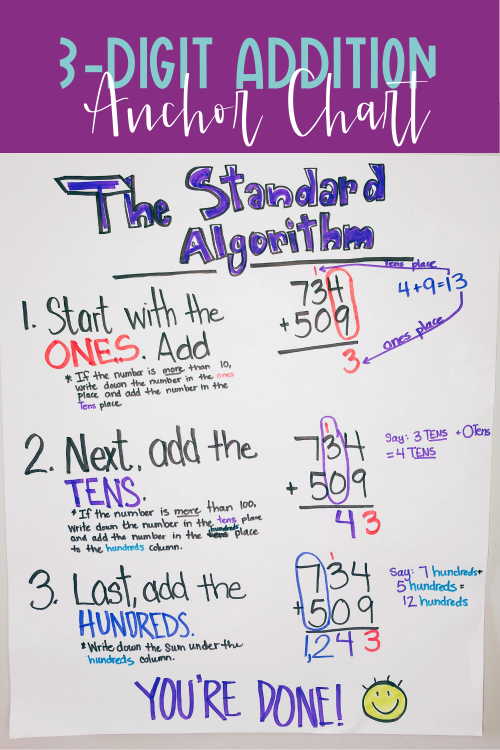
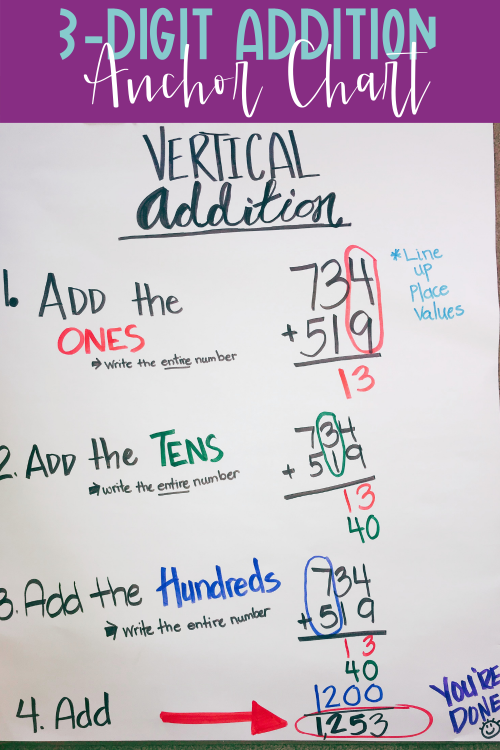
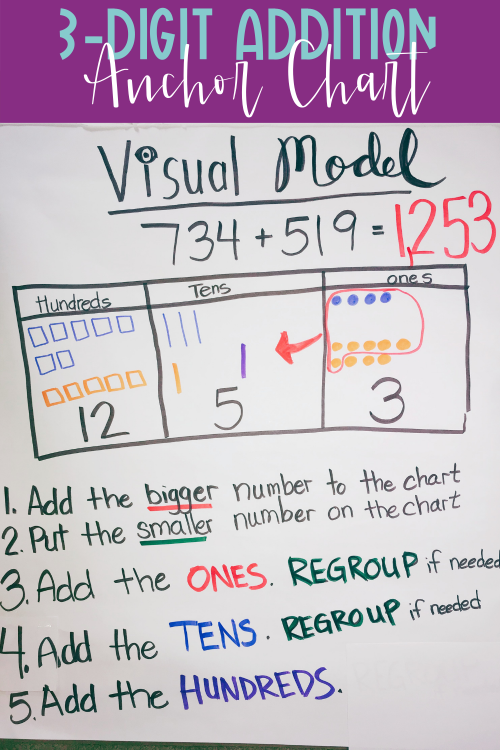
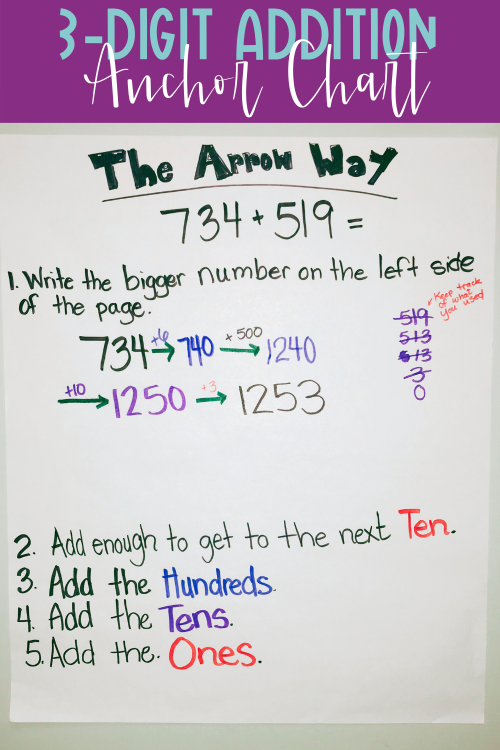
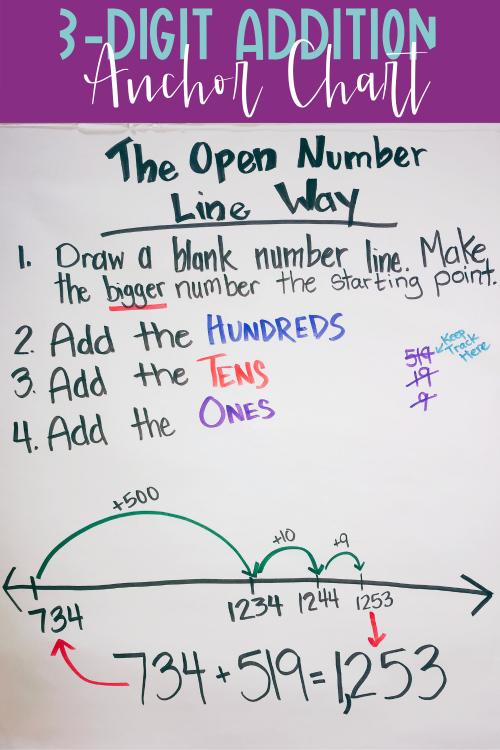

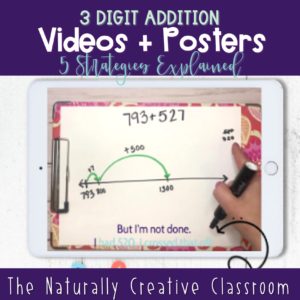
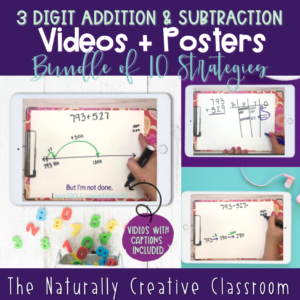
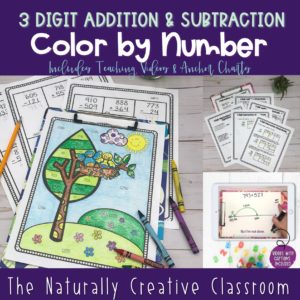

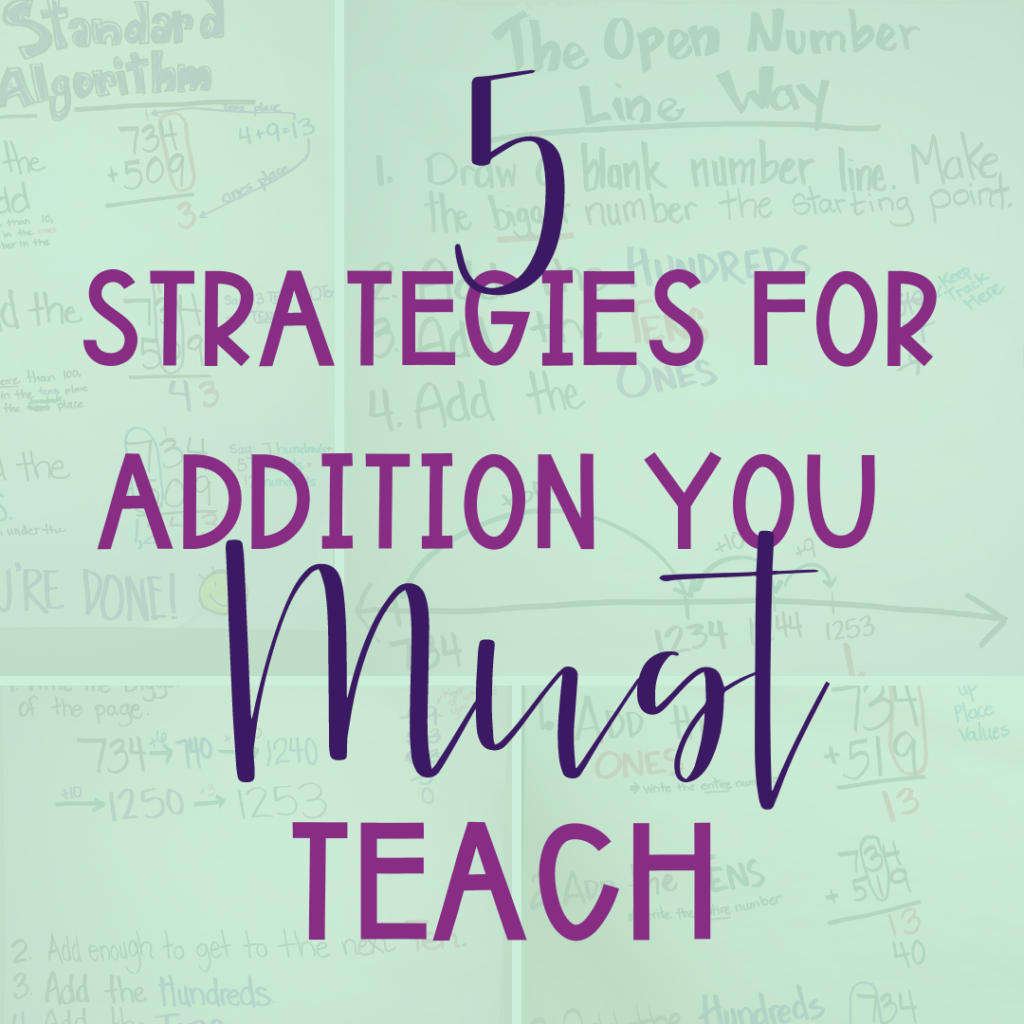

2 Responses